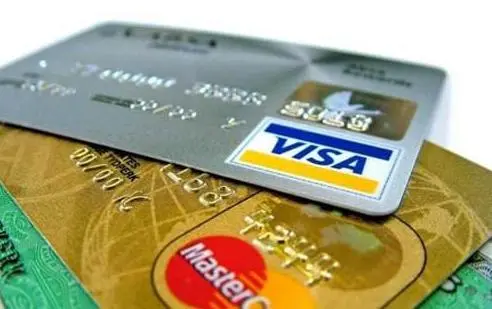In this country full of opportunities but with a complex financial system – Australia, credit cards are not only a tool for People’s Daily consumption, but also a crucial first step for international students and new immigrants to establish a credit record in Australia and integrate into the local financial system. However, in the face of a wide variety of card types, complex annual fees and interest rates, as well as strict application requirements, how can one make the wisest choice? This article aims to provide you with the most authoritative and practical comprehensive guide to Australian credit cards. We will conduct an in-depth analysis of the core advantages of various types of cards, provide you with the latest comparison table of student/new immigrant credit cards, and offer detailed guidance on how to query and establish your credit record. Whether you are seeking a low-fee entry-level card or hoping to maximize the value of your spending through reward points, this guide will be a reliable partner for you on your financial journey in Australia.
Reference Table for Entry-Level Australian Credit Cards
| Bank | Card | Annual Fee | Interest Rate (Purchase p.a.) | Credit Limit Range | Key Requirements/Features |
|---|---|---|---|---|---|
| NAB | NAB Low Rate Card | AU$59 | 13.49% | AU$1,000 – AU$10,000 | Lower interest rates; suitable for users who need to overdraw occasionally. |
| ANZ | ANZ Low Rate Visa | AU$58 | 13.74% | AU$1,000 – AU$15,000 | Low interest rates, but a higher minimum annual income may be required. |
| HSBC | HSBC Low Rate Card | AU$29 | 13.99% | AU$1,000 – AU$10,000 | Lower annual fee; suitable for students with limited budgets. |
| Westpac | Westpac Low Rate Card | AU$55 | 13.49% | AU$1,000 – AU$10,000 | Competitive interest rate; many bank branches offering convenient service |
| CommBank | CommBank Low Rate Card | AU$50 | 13.20% | AU$1,000 – AU$10,000 | The largest bank in Australia, with excellent ATM and App service experiences. |
Australian Credit Card Types
By Payment Method
There are three major types of credit cards in Australia: Visa, MasterCard and American Express. In terms of acceptance, Visa and Mastercard are much more accepted than American Express, mainly because the fees charged by American Express to merchants (up to 3%) are much higher than the other two types of credit cards, which makes some small and medium-sized merchants reluctant to accept American Express. The main reason is that the merchant fees for American Express (up to 3%) are much higher than the other two credit cards, which makes some small and medium-sized merchants reluctant to accept American Express. Even if they do accept it, they still charge extra fees, which pass on the cost to the cardholder.
Divided According to the Annual Fee and Bonus Points
Australian credit cards are broadly divided into high annual fees and high rewards. There are low or zero annual fees and no rewards. The advantage of the former is that the money spent can accumulate credit card points or be converted into airline mileage points. Cardholders can get thoughtful travel accident insurance when purchasing international air tickets, saving the cost of spending money on insurance. This kind of card is suitable for people who have financial strength, travel a lot and are good at financial management. Its services are good, and the annual fee charged is relatively high. Take Commonwealth Bank as an example; the annual fee ranges from AUD 99 to AUD 300 according to the regular, gold and platinum card levels.
Annual fees for Australian credit cards with no rewards are generally under AUD$50. Australia has a high degree of networking; restaurant reservations and flight bookings are usually done online, and car refuelling, supermarket shopping and taxi cabs can all be done with a credit card. So, applying for this card will make your life easier without spending too much. There is also an Australian credit card for students, which does not charge any annual fee but has a lower credit limit. Whichever of these Australian credit cards you choose. You can get an interest-free period of 44 days, 55 days or up to 62 days.
What You Need to Have to Get an Australian Credit Card
Applying for a credit card in Australia is like applying for one in China. It would be best if you had specific qualifications, which are more stringent before applying. The following conditions generally need to be met:
Permanent resident status or hold a visitor visa;
Be at least 18 years old;
Have a stable salary income and other mandatory conditions.
What is the annual income after tax, whether you own a property or a car, how much money you have in your account, whether you have debts and bank debts, and how active you are in your economic activities? Your credit history is also a factor that banks will consider when reviewing the issuance of a credit card.
Banks are not the only organisations that issue credit cards. Major department stores, airlines, etc., also independently issue co-branded credit cards to consumers through the assistance of banks, offering services such as interest-free instalment purchases, multiple points and special offers on purchases.
Are international students eligible to apply for an Australian credit card?
Yes, many banks in Australia accept applications for Australian credit cards from international students, such as HSBC (HSBC), ANZ (Australia and New Zealand Bank), ST GEORGE (St George Bank), Commonwealth Bank (Commonwealth Bank CBA), WESTPAC (Westpac), NAB (National Australia Bank) and other central banks.
Which credit card is suitable for international students in Australia?
Each bank has its advantages, depending on your needs. For example, Commonwealth Bank has more ATMs, so it is very convenient to access; ANZ has branches in all major cities in China, so it is more convenient for parents to transfer money. The “Debit Card” issued by HSBC, ANZ and ST George is more suitable for international students to apply. A Visa Card is ideal for international students, and the limit is about $1000-$5000.
Factors to Consider Before Applying for a Credit Card
The main factors to consider before applying for a credit card are as follows:
Spending Habits, Spending Structure
This is the first thing you need to consider, and it plays a significant role in choosing which card to apply for. For example, do you usually travel for business or pleasure? How much do you spend on supermarkets in a month? You can’t just see a grand opening bonus and go for it.
Special Needs shortly
For example, are you planning to return home in six months or have travel plans? Apply for an airline-related credit card now, and the opening mileage point bonus will be available. Later, if you don’t want to keep it, you can downgrade (recommended) or close the card.
Annual Fee
Most Australian credit cards have an annual fee, but there are also cards with no annual fee. The rebates are low, but it’s always better than nothing.
Other Extra Fees
Before applying for a credit card, read the terms and conditions of use carefully to find out if your bank will charge you any additional fees. For example, you can apply for a card without a foreign transaction fee if you spend a lot of money abroad. There is also a Late Payment Fee. To avoid this fee, my practice is to set up auto payment for all credit cards. And for the first time Late Payment, you can usually withdraw it by contacting your bank.
Credit Limit
If you want to use your credit card to pay your tuition fees and earn points, it can be tricky if you don’t have enough credit.
Minimum Requirements
For example, AMEX credit cards have a minimum annual salary requirement, and there are also requirements for visa types, such as AMEX Explorer, which requires a medium to long-term 482 visa. These requirements are usually listed on the credit card application page.
Credit Card Acceptance
For example, AMEX is not yet accepted in many small shops and restaurants in Australia, so you need a Visa or MasterCard to form a combination.
Internet Banking Experience
This may seem irrelevant, but it does have an impact on how you use it. For example, compared to several central banks in Australia, Commonwealth Bank’s mobile phone app is much better than AMEX’s. AMEX’s app experience is not so good.
Qualification of the Bank (size, branches, etc.)
Commonwealth Bank’s outlets are undoubtedly numerous in Australia, and they are usually very convenient for conducting business and withdrawing cash. After CITIBANK pulled out all its outlets in 2018, conducting business was much more troublesome.
Open Card Consumption Task
Like the very popular ANZ Frequent Flyer Black Credit Card, although the opening rewards are good (100k Qantas points), you need to spend $4000 in three months, which I’m afraid is more difficult for many people to do.
Required Documents to Apply for a Credit Card in Australia
Two documents are necessary to apply for a credit card in Australia:
Passport;
A TERM DEPOSIT certificate, which shows that you can repay the loan.
Credit history: If you have had a credit card or loan before, you must have a credit history. You can still apply for a credit card with 0 credit history if you have nothing.
Home address: Most banks don’t accept rented mailboxes (such as UPS public mailboxes) as a receiving address, so it’s OK to put in a dorm room or flat.
For the rest, it depends on each bank’s specific requirements, and you need to consult your local card-issuing bank.
Australia Credit Card Application and Processing
As in China, the following forms can be used to apply for a credit card in Australia:
Go to the official website of the credit card you want to apply for and submit the application form, then send the information to the designated place;
Send the application form and information to the credit card provider by post;
Going directly to a branch;
They call and send the required information to the credit card provider.
But whichever way you go about applying, you will need to submit the appropriate information, and the process is summarised as follows:
- fill in the application form first;
- submit materials. 3;
- Credit card issuers review the information.
- After the audit, the credit card issuer will mail the credit card to you, usually about 1-2 weeks, slow one month or so. 5;
- Activate the credit card after receiving it, and you can use it.
Australia Credit Card Recommendations
The American Express Explorer Credit Card

Annual fee: $395
Card Rewards: 100,000 bonus points when you open the card, provided that you spend $4,000 in the three months before you open the card.
Credit Limit: Depends on your income.
This is one of the most highly rated Australian credit cards on the web, with an annual fee of $395, but with a $400 Travel Credit every year and 2 points for every $1 spent, except for 0.5 points for $1 spent on government-related purchases. There’s also free access to Amex airport lounges twice a year. Extra mobile phone insurance, access to American Express lounges at Sydney and Melbourne airports twice a year, all-inclusive travel insurance, and no car hire insurance.
The American Express Platinum Edge Credit Card

Annual fee: $195
Card Rewards: Apply online, be approved by 1 February 2023, and earn 50,000 bonus Membership Rewards points when you spend $1,500 in the first three months. In addition, you will also receive a $200 credit when you spend $200 or more in-store or online at David Jones within the first three months.
Credit Limit: Based on your income.
This credit card offers the best affordable, balanced value. There is a $195 annual fee but a $200 annual travel credit. If you are a Professional Australia, CPA Australia, or AMA (Australian Doctors Association) member, the yearly fee can be reduced to $149. The $200 travel credit can be used to book flights and hotels on the Amex website. Although hotels will be slightly higher than the hotel’s website and other platforms, air ticket prices are still very advantageous. Cardholders can use this travel credit to book flights for other people. Another advantage of this card is the high points. Swiping your card at supermarkets and petrol stations will accumulate 3 points per $1. Supermarkets will sell cash gift cards from other retailers, such as Myer, so you can indirectly enjoy triple points at Coles or Woolworths by purchasing gift cards from other retailers.
HSBC Platinum Credit Card

Annual fee: $29 for the first year, $129 thereafter
Card Reward: No
Credit Limit: $6,000 onwards
The annual fee for this credit card is $129, but the first year is only $29. Use this card to earn 1 point for $1 spent in Australia and 2 points for $1 spent overseas, with a cap of 10,000 points per statement cycle. You also get two airport lounge passes per year. There’s also Australian domestic and international travel insurance, including Hire Car Insurance Excess, Transport Accident Insurance, Extended Warranty Insurance, Guaranteed Pricing Plan and Purchase Protection Insurance.
HSBC Premier Rewards Plus

Annual Fee: No
Credit Limit: $10,000 onwards
The best thing about this credit card is that there is no annual fee, but again, there are no card opening rewards. Regarding points, 1 point is for $1 spent in Australia, and 1.5 points is for $1 spent overseas. Points are capped at 10,000 and can be redeemed for shopping, travel and merchandise rewards. Alternatively, you can transfer your points to leading airline reward programmes, including AsiaMiles™ and Singapore Airlines KrisFlyer. You will also have access to domestic and international travel insurance, including hire car insurance excess, transport accident insurance, extended warranty insurance, guaranteed pricing plans, and purchase protection insurance. It also offers holders membership to over 1,000 lounges worldwide and exclusive offers from top airport merchants. The card is a bit more demanding, though, requiring you to have at least $500,000 in loans or $200,000 in savings with HSBC.
ANZ Rewards Travel Adventures

Annual fee: $225
Card Rewards: Spend $1,000 on eligible purchases in the first three months and earn 40,000 bonus points.
Credit Limit: From $10,000
This card has an annual fee of $225 but comes with a free round-trip economy class ticket on Virgin Australia flights within Australia every year. However, it must be booked three months in advance and only for a round trip within Australia and the cardholder’s use. The benefit, however, is that most round-trip flights between cities cost more than $225. There are no foreign transaction fees with this card. So, this card is still an excellent choice for those who use an ANZ bank account and will be travelling within Australia every year. In terms of points, you get 1.5 points per $1, but there is a $2000 cap. When the card is swiped over $2000 per month, only 0.5 points per $1 are accrued.
Australian Credit Record: How to Check & Establish?
In Australia, your cedit history is the cornerstone of your financial identity, directly influencing the approval results of your future applications for renting, loans, and even certain jobs. For new immigrants and international students, establishing a positive credit record is of vital importance.
How to Check Credit Score?
To check your credit score, there are mainly three credit reporting agencies in Australia: Equifax, Experian and Illion. According to the Privacy Act, you have the right to obtain a credit report for free every year. The most commonly used query method is to submit requests through the official websites of Equifax or Experian. The query results will show your Credit Score, which is usually between 0 and 1000 or 1200. The higher the score, the better. The report will also detail your credit activities over the past seven years, including loans, credit card applications, overdue payment records, etc.
Key Steps to Establishing A Positive Credit Record
- Making full and timely repayments: This is the most important factor in establishing a good credit record. Even the minimum repayment amount should be paid before the due date.
- Avoid over-application: Applying for multiple credit cards or loans within a short period of time will leave a negative record on your credit report. Each application will be recorded as a “Hard Inquiry”.
- Maintain a low Credit limit usage rate: Ideally, your credit card usage (Credit Utilisation) should not exceed 30% of the total limit. For instance, if your credit limit is AU$5,000, then your outstanding balance had better not exceed AU$1,500.
- Keep your account active for a long time: The length of your credit record is also a positive factor. Even if you no longer use a certain card, you should consider keeping it to maintain the length of your credit history.
Interest-Free Period of Credit Cards in Australia
Many Australian credit cards offer the “Up to 55 Days Interest-Free” promotion, but this “55 days” is not calculated from the day you make the purchase, but from the billing cycle. Understanding its working principle is the key to avoiding paying high interest.
Two Stages of Interest-Free Period Calculation
- Statement Cycle: Usually 30 days. All transactions that occur within this cycle will be recorded on the same bill.
- Grace Period for repayment: After the billing date, the bank will give you a grace period of approximately 20 to 25 days to pay the full balance on the bill.
Realization of the longest interest-free period (55 days): Only when you make a purchase on the first day of the billing cycle can you enjoy the longest interest-free period (30-day billing cycle + 25-day grace period = 55 days). If you make a purchase on the last day of the billing cycle, your interest-free period will only have a short 25-day grace period.
Key rule: To enjoy the interest-free period, you must pay the full amount of all outstanding debts from the previous billing cycle before the monthly repayment deadline. If you only pay the minimum repayment amount or part of the debt, you will lose the interest-free period for the entire account and interest will be calculated from the day of purchase until you repay the full debt. Therefore, for any user who hopes to use the interest-free period for short-term capital turnover, full repayment is an unbreakable rule.
Credit Card Anti-theft and Stolen Credit Card Processing Methods
Enable Payment Reminder Function
Currently, most overseas thefts are detected and dealt with after the cardholder receives the payment reminder from the bank. Therefore, cardholders should ensure that they have activated the SMS payment reminder function of their credit cards before they go overseas to spend money to ensure that they can be aware of the change in the amount of money on their cards the first time. It is recommended that cardholders with overseas card needs should activate their mobile phones to receive SMS or phone roaming functions in a timely manner before travelling to receive transaction information alerts smoothly sent by the bank.
Swipe and Use Your Card out of Sight
As many overseas credit card theft cases are caused by card information leakage, cardholders are advised to remember to protect their cards and not to keep them out of sight when using them overseas. In addition, cardholders should also take care to store their identity documents and cards separately to avoid the risk of theft or loss of both credit cards and identity documents, which may result in a greater risk of credit card fraud.
Keep the CVV2 Code in a Safe Place
Overseas credit card spending is generally recognised only by the signature but not by the password. Suppose the cardholder attaches a personalised signature to the signature line on the back of the credit card, which is difficult to imitate. In that case, this can reduce the risk of theft by imitation to a certain extent. In addition, it is also essential to protect the “CVV2 code” printed next to the signature line. Without these three digits of information, even if a thief obtains credit card account information and makes a duplicate card, the card will be rejected by ATMs or POS machines when withdrawing money or making purchases. Therefore, users are advised to keep their CVV2 code in mind and cover it with adhesive tape or scrape it off when purchasing abroad.
Selection of Merchants
Cardholders need to pay attention to the safety of the card environment when using their cards abroad and should be selective about the merchants when swiping their cards. They should be wary of small shops in bazaars or street stalls and should prepare some cash and change to cope with the consumption needs of these small merchants.
Replace Your Card When You Return Home
As the majority of overseas fraudulent transactions occur after the cardholder returns to his/her home country, to safeguard the security of the account information, the cardholder can call the card issuer to apply for a card replacement after returning to his/her home country or actively cooperate with the card issuer when the card issuer advises him/her to replace his/her card.
Retain Consumption Documents
After spending money abroad, make sure to keep the consumption documents. When you receive the bill, you can check the consumption information and contact your bank if you have any questions.
Purchase Credit Card Anti-theft Insurance
In addition to raising security awareness of anti-theft and avoiding the risk of improper operation, tourists travelling to Southeast Asia and other countries with a high risk of overseas theft can also choose to purchase the relevant theft insurance to increase their compensation protection.
Book Student Accommodation in Australia
If you want to study in Australia and renting an apartment is a big problem, uhomes.com offers a huge range of affordable and comfortable student accommodation for Australian students at the cheapest student flat rentals! You can rent luxury or budget suites, studio flats, and private and shared rooms with various amenities at student accommodation in Melbourne, Sydney, Adelaide, Canberra and Brisbane.
FAQ
What types of credit cards are available in Australia?
In Australia, consumers can choose from various credit card types, including standard, rewards, frequent flyer, low-interest, no-annual-fee, and balance transfer cards, catering to diverse financial needs and spending habits.
How do I choose the best credit card for my needs?
To select the ideal credit card, assess your spending patterns and repayment ability and compare card features such as interest rates, rewards programs, fees, and credit limits against your financial goals.
What is the importance of the credit card interest rate?
The interest rate is crucial as it determines the cost of borrowing on your credit card. A lower rate means less interest accrual on unpaid balances, making it a key factor to consider, especially if you plan to carry a balance.
What should I know about credit card fees?
Understanding the fees, such as annual fees, late payment fees, cash advance fees, and foreign transaction fees, helps select a card that minimizes unnecessary costs and aligns with your spending habits.
How does a balance transfer work?
A balance transfer involves moving existing debt from one credit card to another with a lower interest rate, often as a promotion. This can help save on interest and consolidate debt, but it’s essential to be aware of balance transfer fees and the duration of the low-interest offer.








